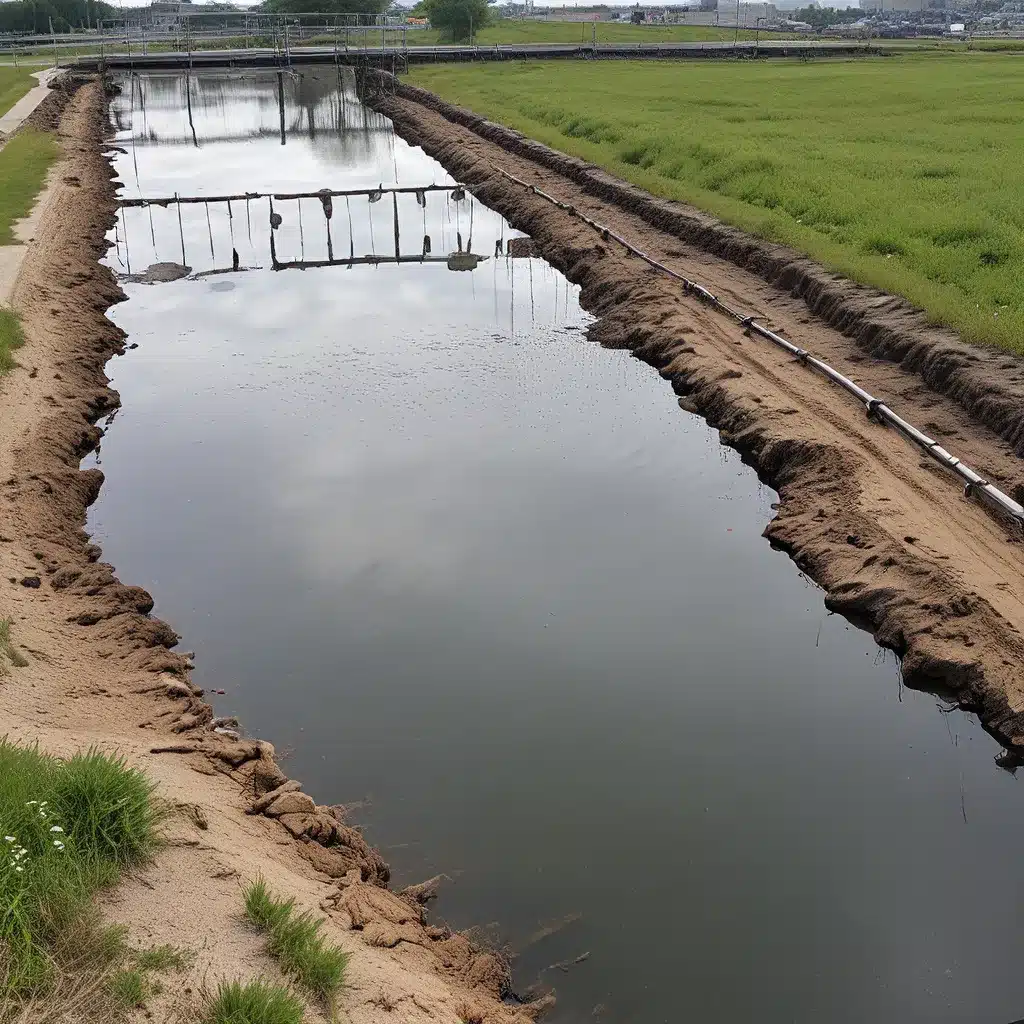
As I step into the bustling water treatment facility, the air is thick with the scent of chemicals and the hum of machinery. It’s a world of its own, where scientists and engineers work tirelessly to transform once-polluted waters into sparkling clean streams. Welcome to the realm of wastewater wizardry, where the impossible becomes reality.
Diving into the Depths of Wastewater Treatment
The journey to clean water begins with a deep dive into the complexities of wastewater treatment. It’s a symphony of chemical reactions, physical processes, and advanced technologies, all working in harmony to remove the unwanted contaminants that have found their way into our precious water sources.
One of the key challenges in wastewater treatment is the presence of “tricky substances” that can slip through the cracks of traditional purification methods. These are the sneaky pollutants that defy easy removal, taunting the water treatment experts with their resilience. But fear not, my friends, for the water wizards have some tricks up their sleeves.
Recent research from the University of California, Riverside has uncovered new ways to combat these elusive contaminants. By harnessing the power of advanced oxidation processes, the scientists have found a way to break down even the most stubborn pollutants, transforming them into harmless byproducts.
Imagine a game of tug-of-war, with the water treatment experts on one side and the pollutants on the other. The traditional methods were like a weak rope, easily snapped by the resilient contaminants. But with the new oxidation techniques, the water wizards have a titanium cable, strong enough to pull even the most stubborn pollutants to their side.
Unraveling the Secrets of Site Remediation
But the wastewater treatment journey doesn’t end there. Once the water has been purified, the next challenge lies in restoring the surrounding environment – a process known as site remediation.
Imagine a polluted landscape, scarred by the ravages of industrial activity or chemical spills. It’s a daunting sight, but the water wizards are up to the task. They wield an arsenal of specialized techniques, each one designed to target a specific type of contamination.
Table 1: Common Site Remediation Techniques
| Technique | Description |
|---|---|
| Soil Washing | A process that uses water, surfactants, and/or other chemicals to remove contaminants from soil. |
| Bioremediation | The use of microorganisms or plants to break down and remove pollutants from the environment. |
| Phytoremediation | The use of plants to absorb, degrade, or stabilize contaminants in soil, sediment, or groundwater. |
| Thermal Desorption | A process that uses heat to vaporize and remove organic contaminants from soil or sediment. |
| Solidification/Stabilization | A process that binds contaminants in a solid matrix, reducing their mobility and toxicity. |
These techniques, like the tools in a magician’s repertoire, are carefully selected and combined to address the unique challenges of each site. It’s a delicate dance, where the water wizards must balance the needs of the environment, the safety of the community, and the demands of regulatory bodies.
Navigating the Complexities of Environmental Regulations
And speaking of regulatory bodies, the world of wastewater treatment and site remediation is a labyrinth of laws, guidelines, and compliance standards. It’s a minefield that the water wizards must navigate with the utmost care and precision.
As one expert notes, “The regulatory landscape is constantly evolving, and it’s our responsibility to stay ahead of the curve.” From the Clean Water Act to the Resource Conservation and Recovery Act, the water wizards must be well-versed in the ever-changing legal landscape.
But they don’t just comply with the regulations – they actively shape them. By collaborating with policymakers and industry leaders, the water treatment experts help to craft the very rules that govern their work. It’s a delicate balancing act, ensuring that the environment is protected while also allowing for responsible growth and development.
Embracing the Future of Wastewater Treatment
As I walk through the bustling facility, I can’t help but wonder what the future holds for the world of wastewater treatment and site remediation. The water wizards are always on the lookout for the next breakthrough, the next game-changing technology that will push the boundaries of what’s possible.
Recent research has explored the use of advanced oxidation processes, like the ones mentioned earlier, to tackle even the most stubborn contaminants. And the possibilities don’t end there – from cutting-edge membrane filtration to revolutionary bioremediation techniques, the water treatment industry is a hotbed of innovation.
But the water wizards know that progress isn’t just about the technology. It’s about adapting to the ever-changing needs of the environment and the communities they serve. They must be nimble, responsive, and always one step ahead of the curve.
So, as I leave the water treatment facility, I’m filled with a newfound appreciation for the unsung heroes of the environmental world. These are the water wizards, the alchemists of our time, who transform the once-polluted into the pristine. And as I gaze out at the sparkling streams and revitalized landscapes, I can’t help but feel a sense of wonder and hope for the future.
After all, if anyone can work true wastewater wizardry, it’s the dedicated team of experts at Inland Waters, Inc.


